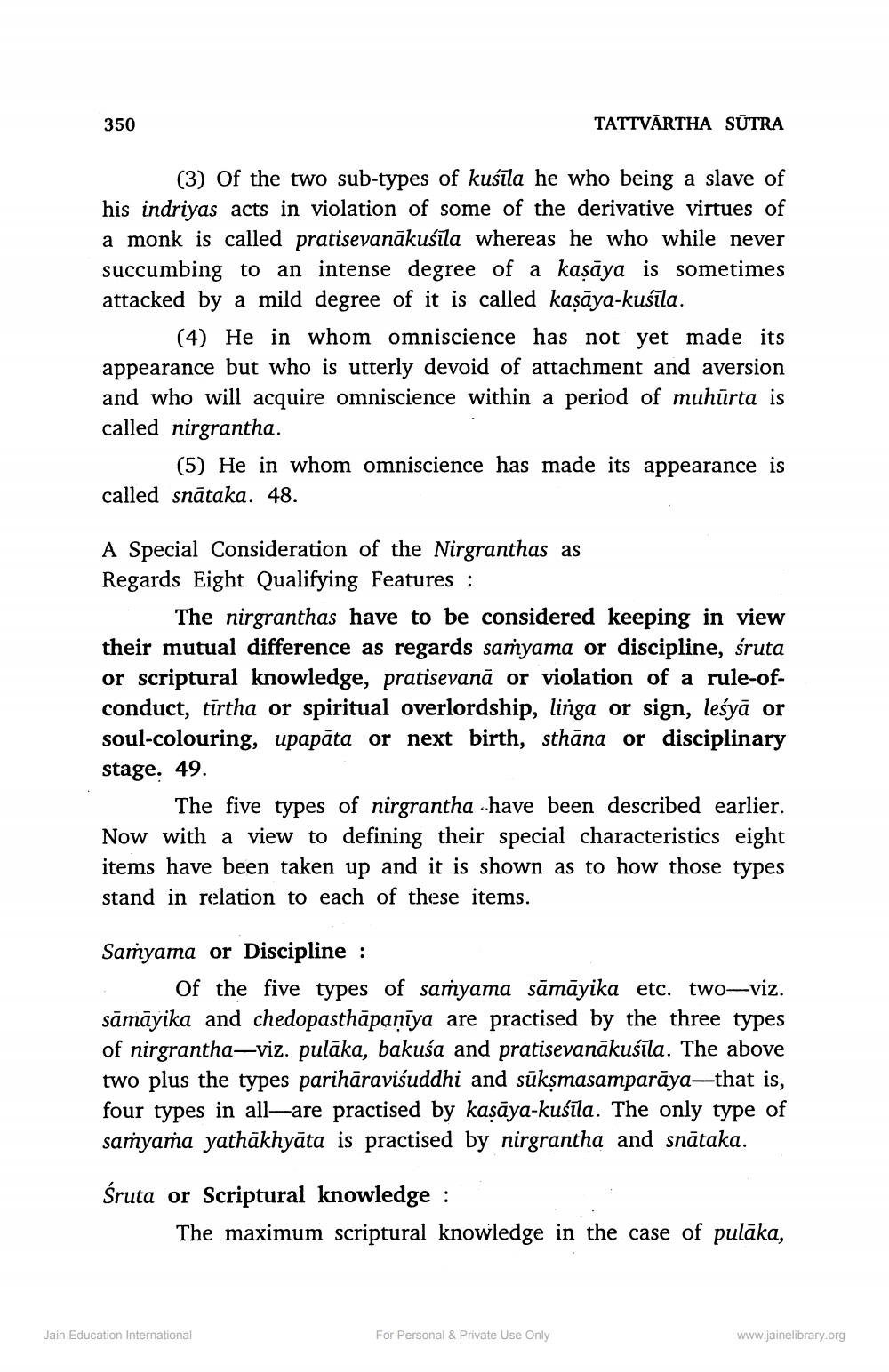________________
350
TATTVĀRTHA SŪTRA
(3) Of the two sub-types of kuśīla he who being a slave of his indriyas acts in violation of some of the derivative virtues of a monk is called pratisevanākuśīla whereas he who while never succumbing to an intense degree of a kaṣāya is sometimes attacked by a mild degree of it is called kaṣāya-kuśīla.
(4) He in whom omniscience has not yet made its appearance but who is utterly devoid of attachment and aversion and who will acquire omniscience within a period of muhūrta is called nirgrantha.
(5) He in whom omniscience has made its appearance is called snātaka. 48.
A Special Consideration of the Nirgranthas as Regards Eight Qualifying Features :
The nirgranthas have to be considered keeping in view their mutual difference as regards samyama or discipline, śruta or scriptural knowledge, pratisevanā or violation of a rule-ofconduct, tīrtha or spiritual overlordship, linga or sign, leśyā or soul-colouring, upapāta or next birth, sthāna or disciplinary stage. 49.
The five types of nirgrantha have been described earlier. Now with a view to defining their special characteristics eight items have been taken up and it is shown as to how those types stand in relation to each of these items.
Samyama or Discipline :
Of the five types of samyama sāmāyika etc. two-viz. sāmāyika and chedopasthāpanīya are practised by the three types of nirgrantha-viz. pulāka, bakuśa and pratisevanākuśīla. The above two plus the types parihāravisuddhi and sūkşmasamparāya—that is, four types in all—are practised by kasāya-kuśīla. The only type of samyama yathākhyāta is practised by nirgrantha and snātaka.
Śruta or Scriptural knowledge :
The maximum scriptural knowledge in the case of pulāka,
Jain Education International
For Personal & Private Use Only
www.jainelibrary.org




